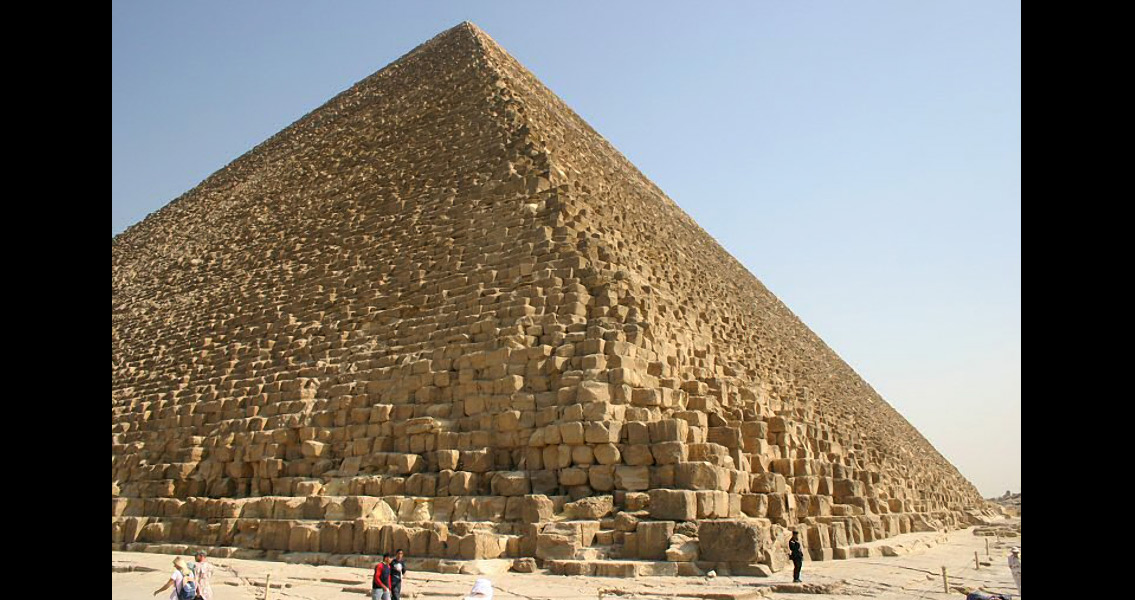<![CDATA[The oldest scrolls of papyrus ever discovered in Egypt – bearing hieroglyphs that describe how the Great Pyramid of Giza was constructed, have been placed on display in the Egyptian Museum in Cairo. The papyri were discovered in 2013, when an international team of Egyptian and French archaeologists were exploring a cave in Wadi el-Jarf, an ancient port on the Red Sea. The cave contained hundreds of fragments of papyrus, inscribed with hieroglyphics, that turned out to be the oldest ever found in Egypt. The results of that find were published in 2014, revealing how the texts contained fragments of a logbook, dating to the 27th year of pharaoh Khufu’s reign, that held information regarding construction records for the Great Pyramid. Merer, the middle-manager inspector who penned the hieroglyphs, left records behind of several months’ worth of construction efforts as the pyramid neared completion. The two-column daily timetable also revealed information about the quarries across the Nile at Tura where the limestone for the Great Pyramid’s exterior had been excavated. The limestone blocks were quarried and then carried by barge down the Nile and through several canals to the construction site over the course of two to three days. According to Merer’s notes, the pharaoh’s half brother Ankhhaef: his vizier and right-hand man, was the head overseer for the project. Other logbooks found in the cave revealed data about other construction projects worked on by Merer and the team of sailors he led during the same time period, including one project that involved building a harbor on the Mediterranean coast. Once the papyri had been discovered in the Wadi el-Jarf cave system, researchers encased the nearly 800 fragments in protective glass frames and shipped them en masse to the Ministry of Antiquities. Last week, six selected fragments were made available in Cairo’s Egyptian Museum for a special exhibition. Of the fragments now displayed, some are financial balances that look remarkably similar to modern accounting documents. Payments for wages and food are recorded in black, while revenues being brought in from the many provinces of ancient Egypt are penned in red. In a statement to the Associated Press, the Egyptian Ministry of Antiquities remarked that the financial documents show how efficient clerical administration was during the reign of the pharaoh. Sabah Adel-Razek, a ministry official, remarked that the other documents recount how food was distributed to workers; one particular set of hieroglyphs listed how many sheep were brought in for the initiative. Hussein Abdel-Bassir, a fellow ministry official, told the AP that the papyri show the central nature, and the administrative power, of the Egyptian government under Khufu. One of the Seven Wonders of the Ancient World – and the only one that remains standing today, the Great Pyramid of Giza was erected between 2650 BCE and 2540 BCE. For almost 4,000 years it remained the tallest man-made structure on earth. Approximately 2.3 million stone blocks, each weighing an average of seven tons, were used in its construction. While the documents were discovered almost 150 miles from Giza, they lack any information regarding the construction of any pyramids at Wadi el-Jarf. Researchers suggested that the port might have been part of the Great Pyramid construction project by supplying the copper needed to forge tools needed by workers in Giza. ]]>
Oldest Papyrus Scrolls in Egypt Placed On Display
